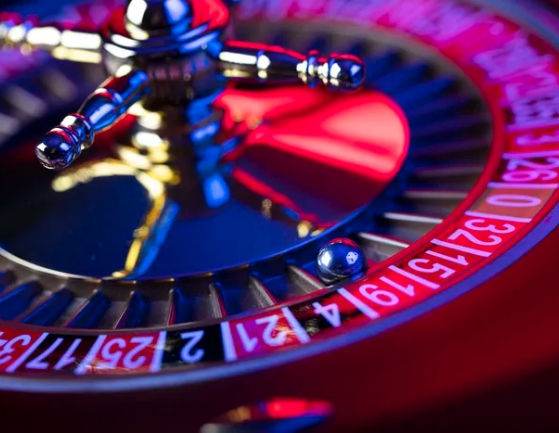최신 토토사이트 추천 및 검증 정보를 한눈에
토토사이트 소개 토토사이트는 온라인 베팅의 새로운 지평을 여는 플랫폼으로, 사용자들에게 다양한 스포츠 베팅 옵션을 제공합니다. 이 사이트는 사용자 경험을 최우선으로 하여, 편리하고 직관적인 인터페이스를 제공합니다. 여러분은 토토친구를 통해 최신 순위, 추천 목록 및 빅데이터 기반의 분석 정보를 쉽게 접할 수 있습니다. 이는 베팅 전략을 수립하는 데 있어 귀중한 자원이 될...

토토사이트 소개 토토사이트는 온라인 베팅의 새로운 지평을 여는 플랫폼으로, 사용자들에게 다양한 스포츠 베팅 옵션을 제공합니다. 이 사이트는 사용자 경험을 최우선으로 하여, 편리하고 직관적인 인터페이스를 제공합니다. 여러분은 토토친구를 통해 최신 순위, 추천 목록 및 빅데이터 기반의 분석 정보를 쉽게 접할 수 있습니다. 이는 베팅 전략을 수립하는 데 있어 귀중한 자원이 될...
안전놀이터: 신뢰의 시작 안전놀이터는 사용자의 안전과 신뢰를 최우선으로 생각합니다. 우리의 목표는 사용자가 안심하고 즐길 수 있는 환경을 제공하는 것입니다. 이를 위해 철저한 보안 체계와 엄격한 기준을 바탕으로 놀이터를 선별하며, 각 놀이터의 보안성과 신뢰성을 지속적으로 모니터링합니다. 또한, 사용자의 피드백을 중요하게 여기며, 지속적인 개선을 위해 노력하고 있습니다. 이박사: 빅데이터를 통한 맞춤 추천...
안전놀이터란 무엇인가? 안전놀이터는 사용자의 안전과 보안을 최우선으로 고려하는 온라인 배팅 사이트를 의미합니다. 이러한 사이트는 엄격한 검증 과정을 거쳐 사용자에게 신뢰성과 투명성을 제공합니다. 토토친구는 이러한 안전놀이터를 소개하며, 사용자가 안심하고 배팅할 수 있는 환경을 제공하는 것을 목표로 합니다. 토토친구 플랫폼의 역할 토토친구는 다양한 안전놀이터를 추천하고, 각 사이트의 상세한 정보를 제공합니다. 빅데이터 분석을...
동행복권 로또 645는 매주 흥미진진한 당첨번호를 제공합니다. 복권의 세계는 무한한 가능성을 제공하며, 우리의 전문적인 분석과 통계는 당신의 선택을 도울 것입니다. 로또번호의 세계: 확률과 통계 로또번호를 선택하는 것은 단순한 운이 아닙니다. 데이터 분석과 확률 계산을 통해, 우리는 로또번호의 흐름을 이해하고 예측합니다. AI 기술로 로또번호 추천 최신 AI 기술을 활용하여, 우리는 로또번호를...
카지노사이트 추천의 새로운 장 온카 플랫폼은 카지노사이트 추천과 순위 정보를 제공하는 신뢰할 수 있는 공간입니다. 사용자들은 이곳에서 검증된 업체 정보와 인기 있는 카지노사이트를 손쉽게 찾을 수 있습니다. 빅데이터를 활용한 카지노사이트 순위 온카는 빅데이터 분석을 통해 가장 인기 있는 카지노사이트들의 순위를 제공합니다. 이를 통해 사용자들은 시장에서 가장 주목받는 사이트들을 한눈에 파악할...
동행복권 파워볼이란? 동행복권 파워볼은 한국의 대표적인 복권 게임 중 하나로, 수많은 이들이 꿈을 키우며 참여하고 있는 게임입니다. 짜릿한 순간의 긴장감을 느낄 수 있는 이 게임, 어쩌면 당신의 손안에 큰 기회가 있을지도 모릅니다. 하지만 무작정 참여하는 것보다는, 파워볼의 특징과 이용방법을 알고 참여하는 것이 더욱 중요합니다. 그렇다면 어떻게 참여할 수 있을까요? 첫째,...
유흥알바란 무엇인가? 유흥알바는 유흥업소에서 진행하는 파트타임 또는 풀타임 직업을 말합니다. 이 업종은 다양한 역할과 기회를 제공하여, 많은 사람들이 추가 수입을 얻거나 새로운 경력을 시작하는 데 도움을 줍니다. 유흥알바의 다양한 급여 옵션 급여는 업체, 위치, 역할에 따라 다양합니다. 일부 업체는 시급을 기준으로 지급하는 반면, 다른 업체들은 일정 수익의 퍼센티지를 지급하기도 합니다....
카지노사이트 순위의 중요성 카지노사이트 선택에 있어서 순위는 사용자의 만족도를 높이는 중요한 기준입니다. 빅데이터와 철저한 검증을 바탕으로 한 순위는 신뢰할 수 있는 업체를 선택하는 데 큰 도움이 됩니다. 추천 카지노사이트와 보증업체 카지노친구와 같은 플랫폼은 다양한 추천 업체와 보증업체 정보를 제공하여 사용자가 안전하게 게임을 즐길 수 있도록 돕습니다. 카지노사이트 이벤트와 프로모션 카지노사이트들은...
토토사이트 순위의 중요성 토토사이트를 선택할 때 가장 중요한 것은 무엇일까요? 바로 신뢰할 수 있는 순위입니다. 신뢰성 있는 순위는 사용자들에게 최상의 선택을 제공하며, 빅데이터 분석을 통해 검증된 토토사이트만을 소개합니다. 토토친구는 여러분의 안전한 베팅 환경을 위해 항상 업데이트되는 순위를 제공합니다. 추천 업체 정보와 인기 업체 소개 토토친구는 다양한 프로모션과 이벤트가 가득한 인기...
밤알바, 왜 이렇게 인기가 많을까? 불후의 클래식, 그것이 밤알바의 매력이다. 도시의 불빛 아래, 많은 사람들이 다양한 이유로 밤의 품에 안겨 일한다. 내 경험상 밤알바는 그 자체로 특별한 추억과 경험을 제공한다. 급여의 진실: 밤알바가 주는 보상 보통 사람들은 밤알바가 주는 급여에 대해 많은 기대를 갖곤 한다. 그러나, 내가 알아본 바로는 직업마다,...
스웨디시 마사지는 단순한 마사지를 넘어서 건강과 웰빙의 신조류로 자리잡고 있습니다. 이 글을 통해 스웨디시 마사지의 정의부터 그 효과, 가격비교, 최저가 검색, 그리고 스웨디시쏘를 통한 업체 정보까지 상세하게 알아보겠습니다. 먼저, 스웨디시 마사지란 스웨덴에서 유래한 전통적인 마사지 기법으로, 전문적인 테크닉을 통해 신체의 긴장을 풀고 순환을 촉진하는 것을 목적으로 합니다. 부드럽고 리드미컬한 스트로크가...
당신이 파워볼에 대해 들어본 적이 있다면, 그것은 단순한 운명의 게임이 아닐 것입니다. 내 친구가 어느 날 “너, 이건 단순한 숫자 게임이 아냐. 이건 과학이야!”라고 말했던 기억이 나네요. 파워볼의 특징 파워볼은 무작위로 추첨되는 숫자들로 이루어진 게임이지만, 그 안에는 숨겨진 패턴이 있습니다. 이 패턴을 분석하고 이해하는 것은 그야말로 숫자에 대한 진정한 사랑을...
24시대출의 정의 24시대출은 이름에서도 알 수 있듯이 하루 내에 신청부터 대출까지 이루어지는 서비스를 의미합니다. 간편하게 언제든지 필요한 자금을 얻을 수 있어 많은 사람들에게 인기가 있습니다. 다양한 24시대출의 종류 24시대출에는 여러 종류가 있습니다. 일반 소비자 대출, 담보 대출, 신용 대출 등 다양한 상품이 있어 소비자의 필요에 맞게 선택할 수 있습니다. 24시대출의...
여러분 안녕하세요! 오늘은 동행복권 로또 645에 대한 흥미진진한 정보를 나누려고 합니다. 로또는 단순히 행운을 시험해 보는 것이 아니라, 분석과 예측을 통해 당첨 확률을 높일 수 있는 과학적인 요소도 포함되어 있습니다. 우리는 이 글을 통해 당첨번호 분석, 통계, 그리고 AI 기술을 활용한 추첨번호 생성에 대해 자세히 살펴볼 것입니다. 당첨번호의 패턴 이해하기...
여러분, 빅토리카지노의 세계에 오신 것을 환영합니다! 이곳은 빠른 가입 과정부터 매력적인 프로모션까지 모든 것을 제공하는 카지노입니다. 이 기사를 통해 그 안내, 게임 제공, 그리고 특별한 이벤트까지 한눈에 볼 수 있습니다. 그럼, 함께 빅토리카지노의 숨겨진 비밀을 찾아보아요! 1. 빅토리카지노 가입 방법 먼저 공식 홈페이지에 접속하여 ‘회원가입’ 버튼을 클릭하세요. 그리고 개인정보를 입력...